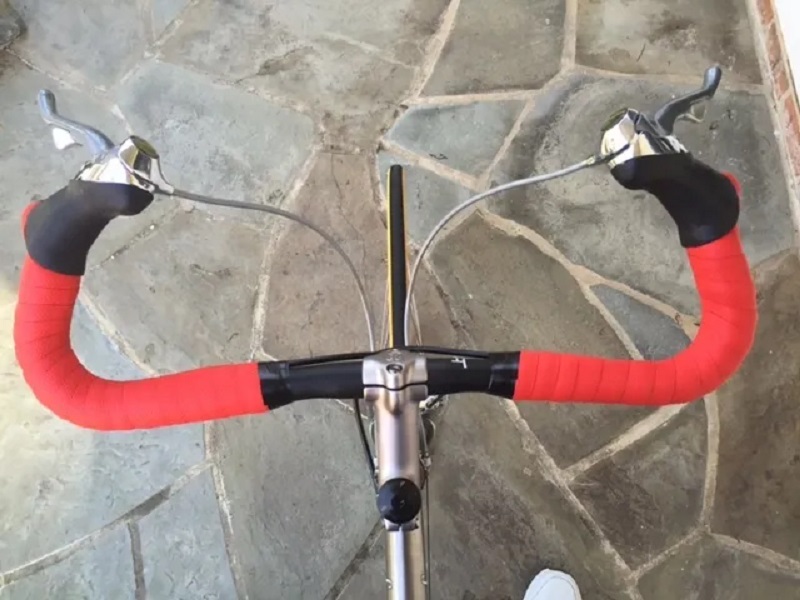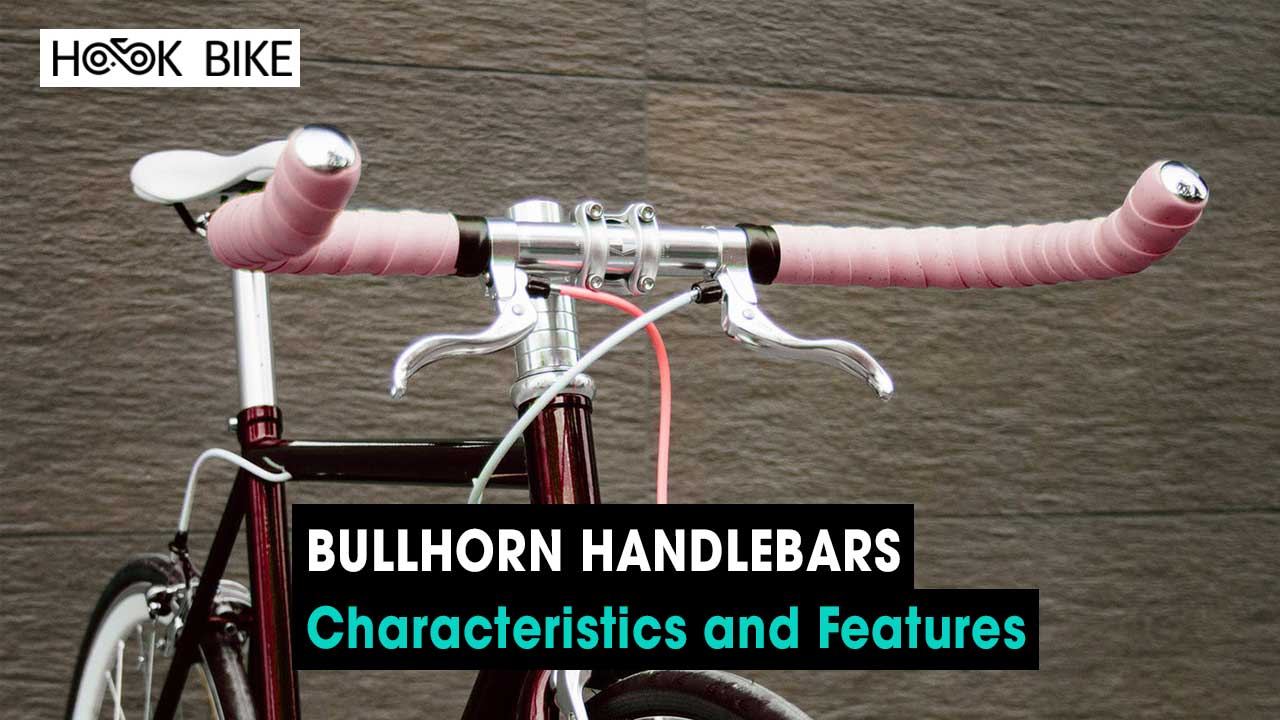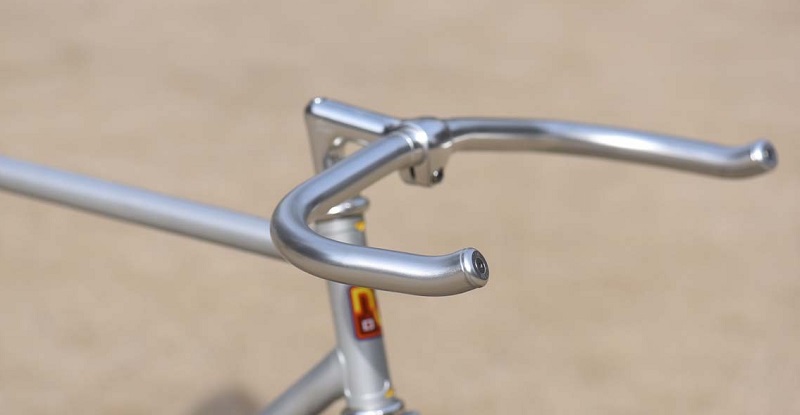Parts
Bullhorn Handlebars: Characteristics and Features
When it comes to cycling, the choice of handlebars plays a pivotal role in the overall riding experience. One of the most distinctive and functional designs is the Bullhorn Handlebars. As the name suggests, these handlebars mimic the shape of a bull’s horns. But what makes them stand out? Let’s HookBike delve deeper into the characteristics and features that define Bullhorn Handlebars.
Origins and Evolution
The origins and evolution of bullhorn handlebars are intrinsically linked to the cycling world’s needs and innovations over the decades. Here’s a brief look into how they came about and evolved:
Origins
Track Racing: The initial inspiration for bullhorn handlebars can be traced back to track racing. Track cyclists sought a handlebar that would offer the benefits of the drop handlebar’s aerodynamic position without the extra weight or complexity of the drops themselves.
DIY Beginnings: As mentioned briefly earlier, one origin story of the bullhorn handlebars is the DIY adaptation by riders who would cut off the drops from their drop handlebars and flip them upside down. This gave riders the extended grip they desired without the drop section.

Evolution
Urban Cycling & Fixed Gear Movement: As urban cycling and the fixed-gear scene grew, especially in the 2000s, bullhorns became a favored choice among city riders. The combination of simple design, multiple hand positions, and responsive control made them ideal for navigating city streets.
Brake and Shifter Integration: With the rising popularity of bullhorns in areas beyond track racing, there was a need to integrate brake levers (and sometimes shifters) into the design. As a result, specific brake levers designed for the central flat section of the bullhorn handlebars were developed.
Variety in Designs: Over time, manufacturers began producing bullhorns in a range of designs, varying in length, curve, diameter, and material to cater to different rider preferences and needs.
Time Trial & Triathlon Bikes: The aerodynamic advantage of the forward position on bullhorns inspired a separate evolution in the world of time trial and triathlon bikes. While not precisely bullhorns, aero bars or tri-bars, which extend forward allowing the rider to rest their forearms and get into an even more aerodynamic position, can be seen as a distant relative of the bullhorn design.
See more: types of handlebars for bicycles
Modern Day
Today, bullhorn handlebars are a mainstay in the cycling world, especially among urban riders and some track racers. Their versatility and unique design, coupled with the rich DIY history, give them a special place in the hearts of many cyclists. While other handlebar designs like drop bars or aero bars might dominate certain racing scenes, bullhorns continue to be a popular choice for many looking for a blend of comfort, control, and aerodynamics.

Features of Bullhorn Handlebars
Bullhorn handlebars, often seen on track and fixie bikes, are a unique type of bicycle handlebar that offers a combination of comfort, aerodynamics, and control. They are characterized by their forward curving design that extends from the stem and then loops back towards the rider, somewhat resembling the horns of a bull. Here are some of the features and benefits of bullhorn handlebars:
Ergonomic Design
The primary allure of the Bullhorn Handlebars is their ergonomic design. Unlike traditional handlebars, Bullhorns curve forward and then loop back towards the rider. This unique design offers multiple grip positions, allowing the rider to switch between aggressive, aerodynamic postures and more relaxed stances with ease.
Versatility
Bullhorn Handlebars are versatile, catering to various cycling needs. Whether you’re navigating through city traffic, going for a long-distance ride, or sprinting on a track, the adaptability of these handlebars ensures optimal performance.
Enhanced Control and Maneuverability
Thanks to their design, Bullhorn Handlebars provide enhanced control and maneuverability. The extended horns offer a solid grip, ensuring riders can make sharp turns and navigate obstacles seamlessly. Additionally, their design promotes better weight distribution, allowing for quicker responses during rides.
Aerodynamic Benefits
In the world of cycling, aerodynamics plays a crucial role in achieving speed and efficiency. The forward-facing design of the Bullhorn Handlebars reduces wind resistance, enabling riders to maintain higher speeds for extended periods. This makes them an excellent choice for time-trial events and competitive cycling.
Customization and Personalization
Another noteworthy feature of Bullhorn Handlebars is the ease with which they can be customized. Riders can adjust the angle and position of the handlebars to suit their riding style and preferences. Moreover, they are compatible with various accessories, from brake levers to bar-end shifters, allowing for a personalized touch.
Durability and Strength
Durability is a hallmark of Bullhorn Handlebars. Constructed from robust materials like aluminum or carbon fiber, these handlebars are built to withstand the test of time and the rigors of daily use. The inherent strength of the design also provides additional safety, ensuring they don’t bend or break easily.
Comfort Considerations
Comfort is paramount for any rider, and Bullhorn Handlebars don’t disappoint. Their multiple hand positions reduce the strain on wrists and hands, preventing numbness during long rides. Additionally, padded tape can be wrapped around the bars, offering enhanced cushioning and grip.
Aesthetics and Appeal
Beyond functionality, Bullhorn Handlebars have an undeniable aesthetic appeal. Their sleek, streamlined design adds a touch of elegance to any bike, making it a favorite among those who value style just as much as performance.

Limitations
- For those used to drop bars, bullhorns might feel limiting in terms of aggressive or aero positions.
- Some riders may find the lack of a true drop position as less versatile for certain types of racing or riding.
- If used on bikes that require multiple gears, riders might need to get creative with shifter placement.
Whether or not bullhorn handlebars are suitable for you largely depends on your riding style and personal preference. For city commuting, casual riding, or certain types of racing, they can be an excellent choice.
Experience in choosing suitable Bullhorn Handlebars
Choosing suitable bullhorn handlebars involves considering various factors. The right choice depends on your riding style, personal preferences, the type of bicycle you have, and even your body’s ergonomics. Here are some tips and insights based on experience in selecting the right bullhorn handlebars:
Width of the Handlebars
The width should approximately match the width of your shoulders. This ensures a natural hand and arm position, reducing fatigue and enhancing control.
Material
Common materials for bullhorn handlebars include aluminum, steel, and carbon fiber.
- Aluminum is lightweight and reasonably durable.
- Steel is robust and provides a bit of flex, which some riders find more comfortable due to its vibration-dampening properties. However, it’s usually heavier than aluminum.
- Carbon fiber is extremely lightweight and can offer good vibration dampening, but it’s generally more expensive.
- Reach and Drop: This pertains to how far the handlebars extend forward (reach) and how much they curve downwards (drop). Your preference will depend on your desired riding position, how aggressive you want it to be, and what feels comfortable for your arm and wrist angles.
Bar Diameter
Ensure the clamping area’s diameter matches your stem clamp diameter. The standard sizes are 25.4mm and 31.8mm.
Brake Lever Compatibility
If you plan on having brakes (most do, but some fixed-gear riders forgo them), ensure the diameter of the section where you intend to mount the brake levers is compatible with the levers you have or plan to buy.
See more: Drop Handlebars
Grip Texture and Finish
Some bullhorns have a textured grip area, while others are smooth. Depending on whether you’re using bar tape or not, this could be an essential factor.
Bar Ends
Consider getting bar end caps or plugs. They not only provide a cleaner look but also ensure safety by preventing the open ends of the handlebars from causing injury.
Ergonomics
Some bullhorn bars offer an ergonomic shape or flattened areas to better fit the shape of a hand. If you’re prone to hand fatigue, these might be worth considering.
Aesthetics and Design
The look and design might be essential for some riders, especially those matching a specific aesthetic or color scheme on their bike.
Budget
Like all components, there’s a wide range in prices for bullhorn handlebars. Set a budget, but be wary of extremely cheap options, which might compromise on quality or durability.
Feedback and Reviews
Before finalizing a purchase, it can be beneficial to read reviews or gather feedback from other cyclists who’ve used the specific handlebars you’re considering. This can provide insights into durability, comfort, and any potential issues.
Test Ride
If possible, test ride a bike with the handlebars or a similar model installed. Personal comfort can be very subjective, and what works for one person might not work for another.
When selecting bullhorn handlebars, or any bike component for that matter, it’s a blend of functionality, personal preference, and comfort. Remember that handlebars play a crucial role in controlling the bike and defining your riding position, so it’s worth taking the time to choose wisely.

How much do Bullhorn Handlebars cost?
The cost of bullhorn handlebars can vary widely based on factors like material, brand, design, and where they’re purchased. Here’s a general price range for bullhorn handlebars:
Entry-Level/Budget: $15 – $40
These are typically made of basic aluminum or steel. They’re suitable for casual riders or those who are just getting into cycling and don’t want to invest heavily upfront. However, they might be slightly heavier or not as ergonomically designed as more expensive options.
Mid-Range: $40 – $100
These handlebars are typically made of higher-quality aluminum, might have better ergonomics, and sometimes come from well-known brands in the cycling industry. They offer a good balance between price, quality, and performance for most riders.
High-End/Premium: $100 – $250+
At this price range, you’re looking at top-quality materials, including carbon fiber options, which are lighter and sometimes offer better vibration dampening. These handlebars are designed for serious cyclists or those who want the best equipment available. They often come from premium cycling brands and offer the best in terms of design, ergonomics, and performance.
See more: Flat Handlebars

When considering the price, it’s essential also to factor in additional costs:
- Bar Tape: Bullhorn handlebars usually require bar tape for grip and comfort, which can range from $10 to $50+ depending on the material and brand.
- Brake Levers: If your handlebars don’t come with brake levers or you want to upgrade, this can be an additional cost. Prices vary, but expect to spend anywhere from $20 to $100+ for a set, depending on the quality and brand.
- Installation: If you’re not installing the handlebars yourself, a bike shop might charge a fee for the service.
That while cost is a factor, it’s crucial to consider the handlebars’ quality, suitability for your needs, and comfort. Investing in a good set can enhance your cycling experience and might save you money in the long run by not needing frequent replacements. Always check recent prices, reviews, and feedback before making a purchase.
In conclusion
Bullhorn Handlebars are a blend of form and function. Their unique design, combined with a myriad of features, makes them a valuable addition to any bike. Whether you’re a seasoned pro or just starting, the Bullhorn Handlebars offer a combination of comfort, control, and style that is hard to match.

